Ford Motor Company has retained ‘the UK’s best-selling brand’ soubriquet, because, when you take all of its operational aspects into account, its product line-up is still one of the most comprehensive in the entire motoring business. Amazingly, the last time I drove a Ford Fiesta was around five years ago. I cannot deny that I was concerned by its steep price-tag, which, for a 1.0-litre car, was nudging an untenable £19k. Intriguingly, the new car sampled here, complete with extras that whisk it from a moderate but still pricey £16,795 to a whopping £18,950 (not including FCD discount), suggests that the market may have caught up but somehow the Fiesta has remained constant.
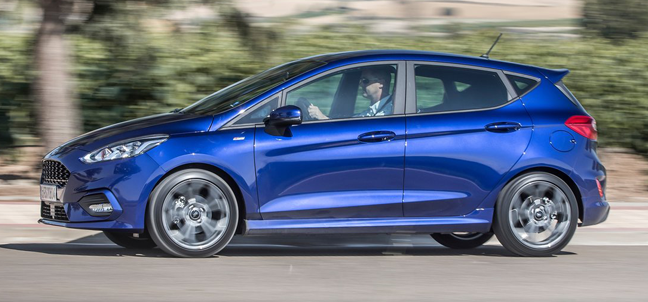
While the old model had retained its undoubted handling and roadholding capabilities masterfully, it was cramped and, for a two-metres tall driver (like me!), disappointingly impractical. Considering that no massive changes have been introduced in creating the latest iteration of the immensely popular model, which was appositely summed up by ‘What Car?’ magazine as having sold as many examples since 2008 as the entire population of the City of Glasgow (!), there is only one way to view the new Fiesta…it is ‘almost’ entirely new and certainly looks it.
The dimensions, which are dictated by its market position, have grown slightly (a teensy 71mm increase in length, 13mm increase in width and 4mm increase in wheelbase). While scarcely a revolution, I can state that it is one of the most appropriately evolutionary upgrades of an highly popular model that I have experienced in my more-than-forty-years of critical testing knowledge. Perhaps more importantly, the new Fiesta feels as fresh as a daisy and looks truly excellent from almost every angle, both inside and out.
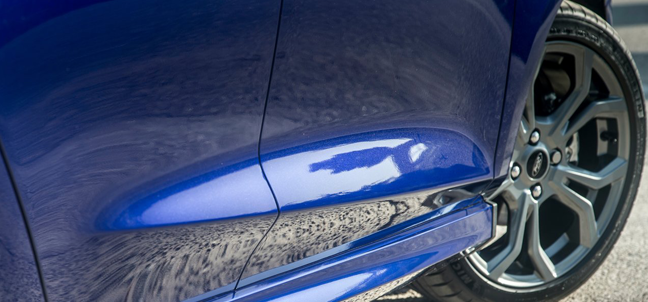
Face it, Ford realised that an investment was needed, whether it had the funds for it, or not. The solution demonstrates that, without altering much of the core product, a judicious spend could remove the overt ‘style-led’ and perpetual teenage stance of its predecessor, while managing to create a more grown-up and substantive end product. This is a prime example of transmogrification from everyman to Superman. Ingenious.
The new wider, rather than vertical, tail-lamps enhance the width of the car and the smoother front-end looks altogether more integrated. The swoopy cut-lines and accents have been removed from the previous generation and, even though the window area is largely identical, it all fits well with the new appearance. It is very attractive.
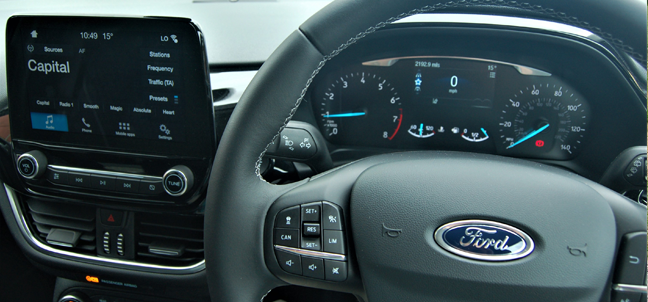
The new Fiesta’s interior is colourful and inviting, the driver being confronted (in Titanium trim) by an 8.0-inch touchscreen that does away with the tiny, sharp-blue scripted mini-screen lurking deep within the dashboard of the previous generation. However, the main analogue dials in the instrument cluster are of larger diameter and significantly easier to read than before, supported by a 4.2-inch TFT information screen that can be accessed by dabbing the steering wheel buttons, or end of the stalk.
The impression of greater space is enhanced both fore and aft, Ford having chipped away at the former, bulkier seats, while increasing the range of adjustments that also include the steering column. In packaging terms, the transformation is a success and, while boot space is always going to be critical, 300-litres is class competitive, despite the high loading lip. The showroom appeal that has always been a Ford saving virtue is perpetuated by the use of a soft-touch dashboard moulding, although many of the other interior plastics are little better than most of Ford’s rivals; in other words, a bit grey and a bit dowdy. Of course, with a ‘Vignale’ super-trimmed version due, I can only hope that ‘downsizers’ will find a Fiesta that meets their psychological expectations.
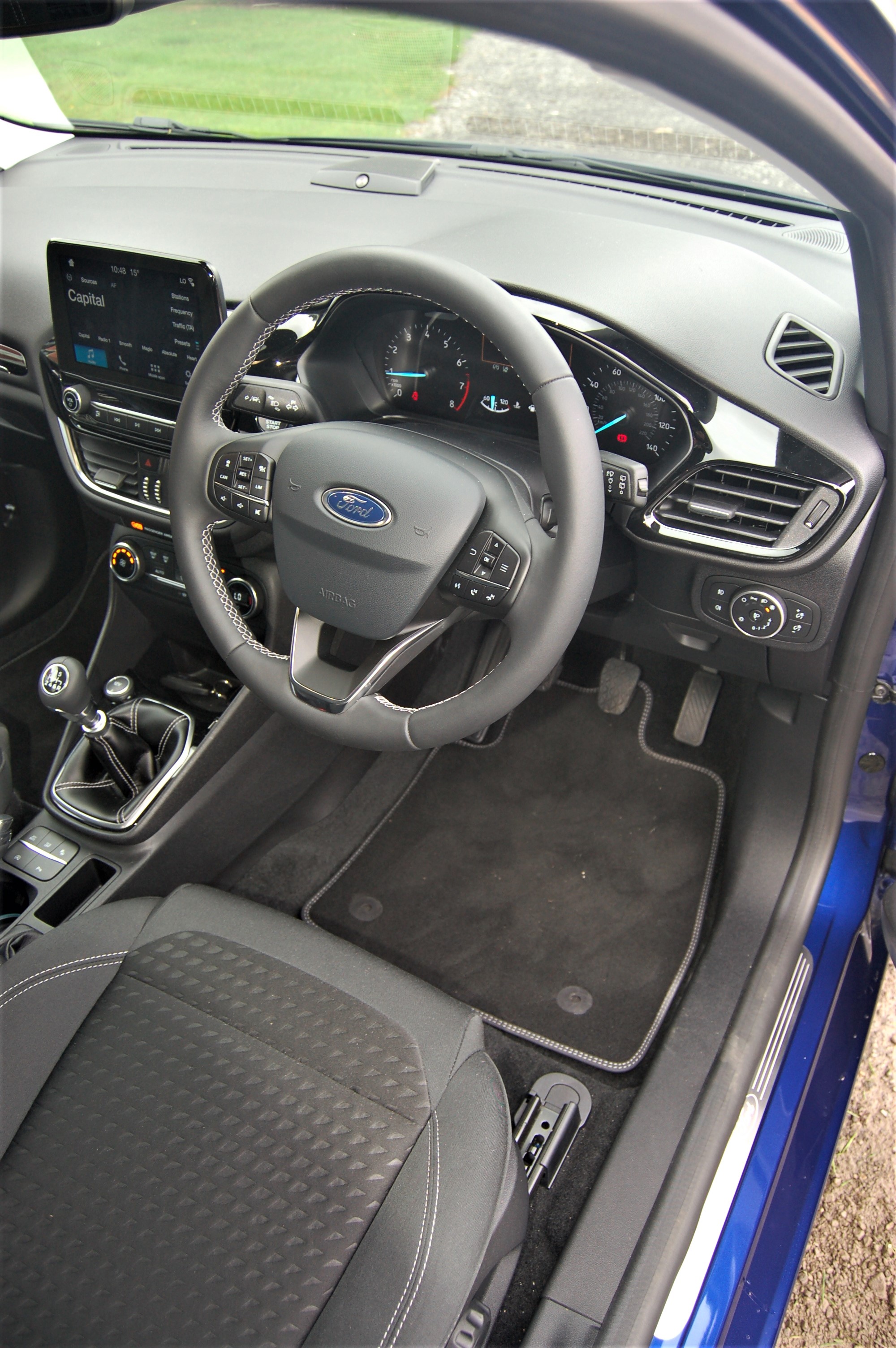
It is helpful that its stock of equipment is quite decent at this mid-range level, with folding door-mirrors (complete with puddle-lamps), LED front and rear illumination signatures, Halogen headlamps, good connectivity, a trip computer, air-con, cruise, keyless start/stop, rain-sensing wipers, auto-on lighting and illuminated cupholders. Sadly, the blue paintwork costs £495 extra, parking assist is £500, the B&O premium, 10-speaker stereo adds £300, upgrading from the standard 16.0-inch alloys to 17.0-inchers is £350, electric rear windows factor in £175, the neat door-edge protectors are a more modest £85, while the driver assistance pack (pedestrian detection, distance alert and both pre-collision preparation and adaptive cruise control) requires an extra £200. That’s from where most of the £2,155 extra invoice cost comes.
While I truly struggled with the 122bhp version of Ford’s sometime revolutionary one-litre-triple lump in the previous Fiesta, I have to state that I was gobsmacked by the brilliance of its 97bhp alternative in the new model. Its 0-60mph acceleration time (quoted as 10.2 seconds) feels far brisker than the on-paper suggestion, even though its 113mph top whack is only averagely good. However, the unit’s 126lbs ft of torque pays dividends, with a decent slug of punch in the intermediate ratios of the test car’s six-speed manual gearbox. It is also worth highlighting that significant changes have improved the gearshift quality.
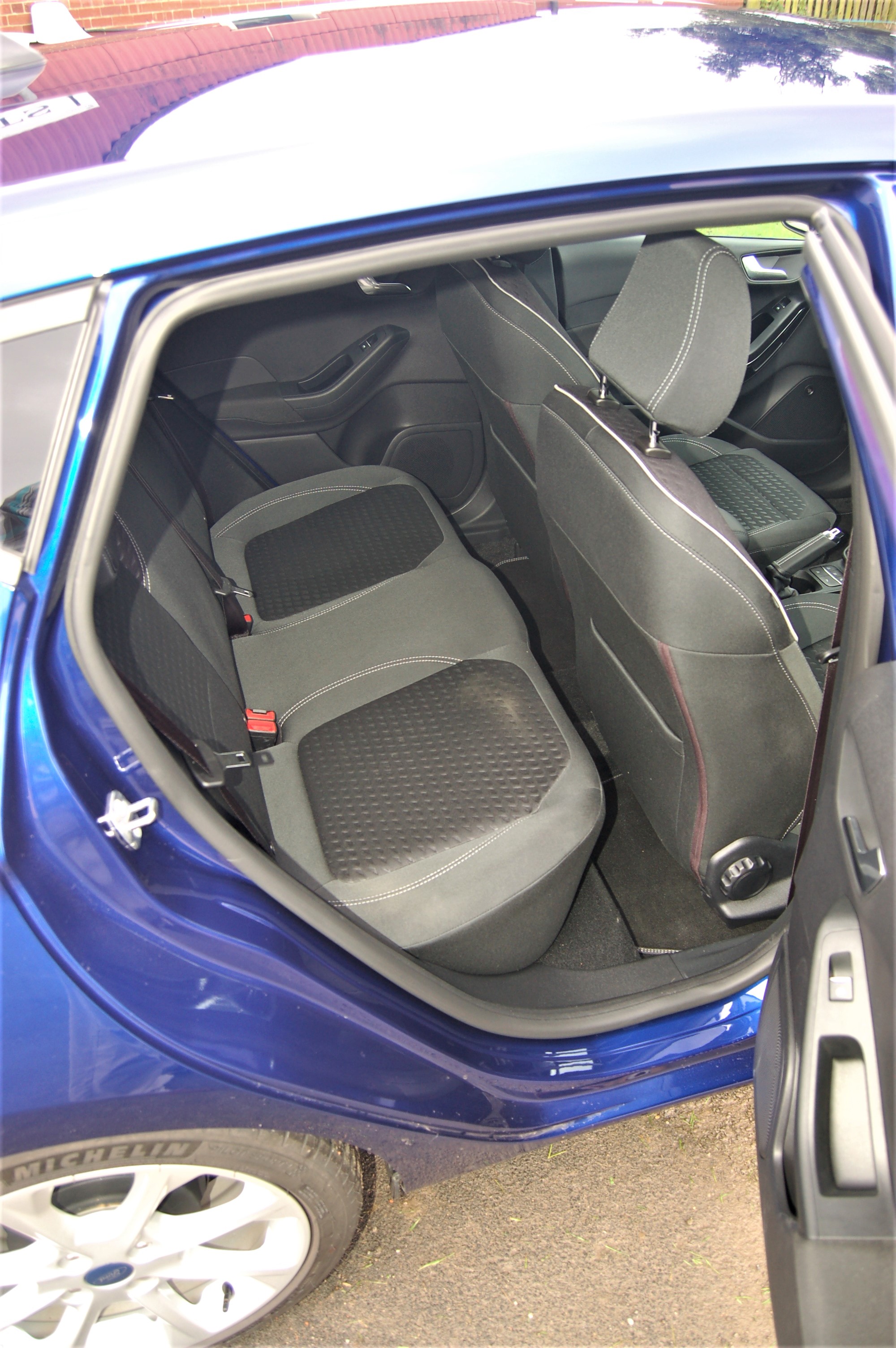
The engine seldom feels less than willing, revving freely up to and even beyond the 6,750rpm redline on its tachometer, emitting that distant, off-beat thrum so redolent of this latest crop of 1.0-litre tiddlers. Having made it my duty to sample every single one of the breed, while I was critical of Ford’s effort in the past, in this iteration, it is no less than superb and helps the driver to engage with the balance of the car’s overall competence. Numerous engineering improvements have been introduced and they work most satisfyingly.
Whether the average Fiesta operator/owner will be able to attain the Official Combined figure of 65.7mpg might be questionable, especially as the encouragement to dig deeply into the Fiesta’s complete range of capabilities is sure to inhibit it, I reckon that most drivers will be content to achieve around 50mpg in daily motoring, stretching it during more relaxed weekend expeditions. A 97g/km CO2 factor helps to keep taxation at a lower ebb.
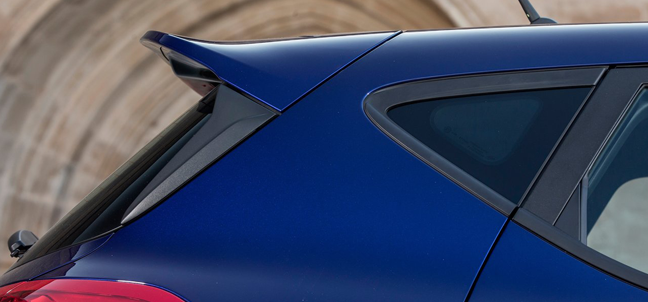
The Fiesta has always been a delightful car to drive, ever since its inception precisely 40 years ago. Its ride quality is beautifully resolved, being compliant and resilient, even on the larger, alloy wheel option. I would venture to suggest that it is the best in class. However, it is aided by steering that reacts with religious zeal to driver twirling, without the nervous edge of some of its class rivals.